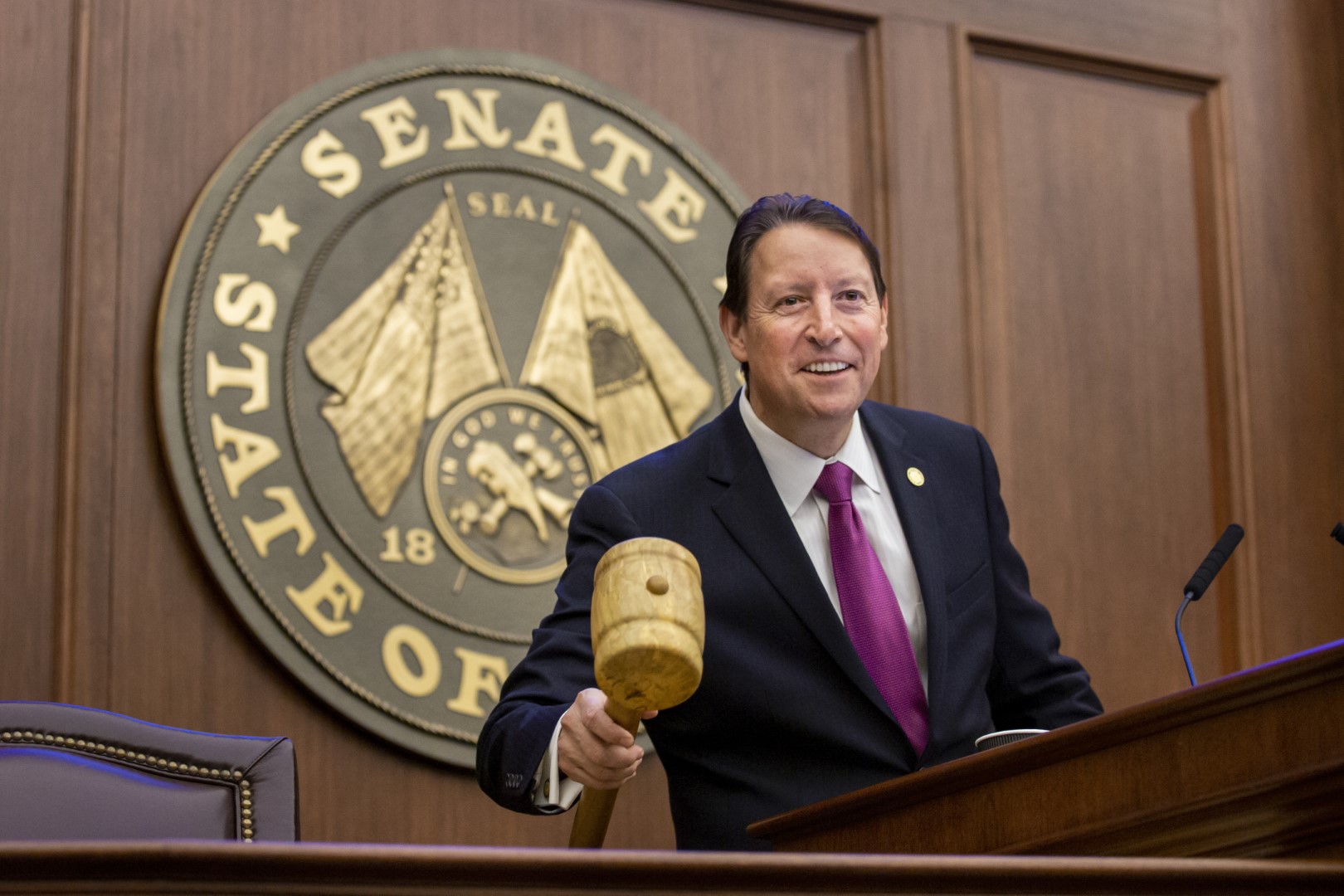
The Senate unanimously passed its proposed budget Thursday, sending the Legislature to debate over key disparities.
Changes adopted Wednesday morning to the Senate’s proposed $92.8 billion budget were enough for Senators, who Thursday patted each other on the back for a job well done.
The document, folded into an amendment to the House budget (HB 5001), asks for $1.4 billion more than the House plan, and roughly the same overage from Gov. Ron DeSantis’ budget. But Sen. Rob Bradley, the Senate budget chair, downplayed the differences between the two chambers’ proposals.
“If you really do a deep dive on the two budgets and you look at the difference in (general revenue) spending … it’s a lot closer than perhaps it appears on first blush,” he said.
Meanwhile, the House has touted its leaner funding plan.
“Compared with the Governor’s and Senate’s proposals, the House’s $91.4 billion budget comes in at the lowest cost to taxpayers and brings state government spending down to $4,158 per person — $47 less per-capita than the current fiscal year,” a media release trumpeted.
Senate President Bill Galvano highlighted teacher and state worker pay raises, nursing home services, environmental investments and infrastructure efforts in a statement.
“The unanimous support for this budget is a testament to the hard work of Chair Bradley and our Appropriations Subcommittee Chairs who worked with each Senator to ensure our shared values are represented in this budget,” Galvano said.
The differences between Senate and House proposals will animate discussions, leading more than likely to brinksmanship and bargaining up to and perhaps through March 13, the scheduled end of the Legislative Session, unless they forge a budget accord.
Among the key differences: fully funding the Sadowski Affordable Housing Trust Fund with $387 million and $52.5 million for VISIT FLORIDA — two positions where the House diverges, offering $144 million and zero dollars respectively.
Sen. Travis Hutson noted these spends, and more, including $20 million in the Florida Growth Job Fund, a proposal short of the $50 million the Governor contemplates.
The Senate proposes $403 million for corrections, along with a 3% across the board raise for state employees. Prison workers will also be eligible for bonuses.
A pilot program to reduce shifts from 12 hours will cost $29.1 million, affecting a third of facilities — compared to the House’s proposed fifth. Hopes are the plan could help alleviate the crisis in the Department of Corrections and turnover rates.
“They thought that that was a good idea to ease some of the pressure on the individuals who work in our facilities to make sure that their quality of life is better and so that they perhaps improve their performance, and we start limiting the turnover that we have at the department right now,” Bradley said.
Florida Forever funding of $125 million is well above the $20 million contemplated in the House and the $100 million by the Governor.
The teacher-pay program, a priority for the Governor, is another area where negotiations will be hammered out until the final hankie drop.
The Senate was willing to commit $500 million for teacher pay raises, with 80% being used to increase the minimum salary to $47,500 as the Governor wants. The hope is to near that goal next fiscal year, but not every district will get there.
The House made the same commitment, with money to “increase the minimum base salary for a full-time classroom teacher to an amount that is achievable by the school district’s portion of the $500 million; however, no school district is required to increase the minimum base salary to an amount that exceeds $50,000.”
If a district has no salaries below that threshold, the money generally would go for raises.
DeSantis wants $602 million to set a minimum salary for teachers at $47,500, which would put Florida only behind New Jersey in starting teacher pay. He’s seeking an additional $300 million for a bonus program for teachers and principals, targeting underserved populations.
The Senate is allocating $500 million for the school Guardian program, including $57 million more rolling over.
Everglades restoration and water resources, at $644 million, is in line with the House and about $20 million more than the Governor’s proposal.
The Senate justified spending bumps in Gov. Ron DeSantis‘ budget with “significant changes in estimates of future state obligations … January estimates not available when the Governor and Executive Branch Agencies submitted funding requests and recommendations in the fall of 2019.”
Among these: “the addition of 10,000 students to the K-12 education system” and “a $216 million increase in costs associated with Florida’s Medicaid Program.”
As well, the Senate proposes the state absorb increases in health care costs for employees, which delighted Democrat Sen. Bill Montford, who represents Tallahassee and many of those impacted workers.
Additionally, the foreign drug importation program is ceded $15 million in this budget for implementation. This falls short of the $20 million the Governor’s budget contemplates.
Also, whereas the House contemplates staff cuts from the Department of Agriculture and Consumer Services, the Senate not only is not cutting staff from or threatening to defund Nikki Fried‘s office but bolstering with resources for the hemp program and other key initiatives.
A number of bipartisan small-dollar amendments were adopted without objection Wednesday, including moving $100,000 to memorials for African-American cemeteries in Tampa that were built over.
“These memorials will allow these communities to heal,” asserted Sen. Darryl Rouson.
This could be precedent-setting, as more are certain to be discovered.



